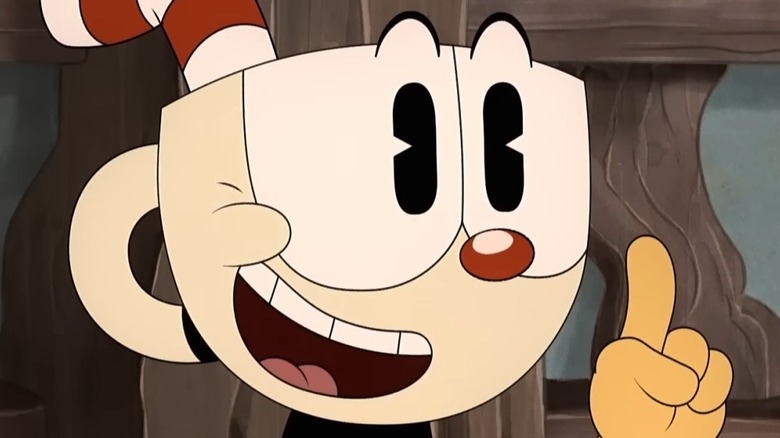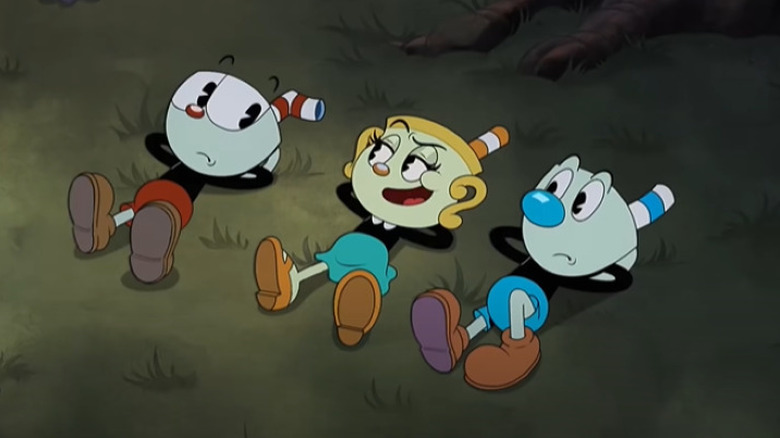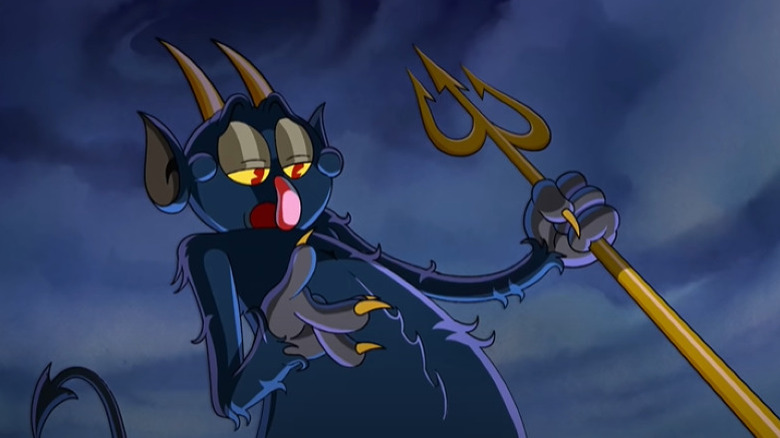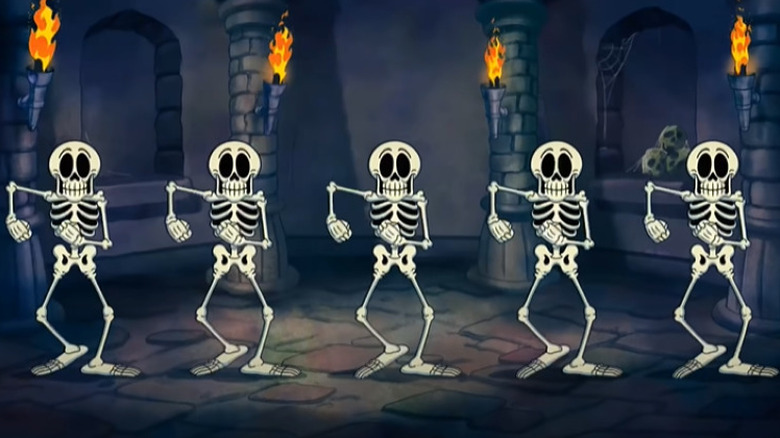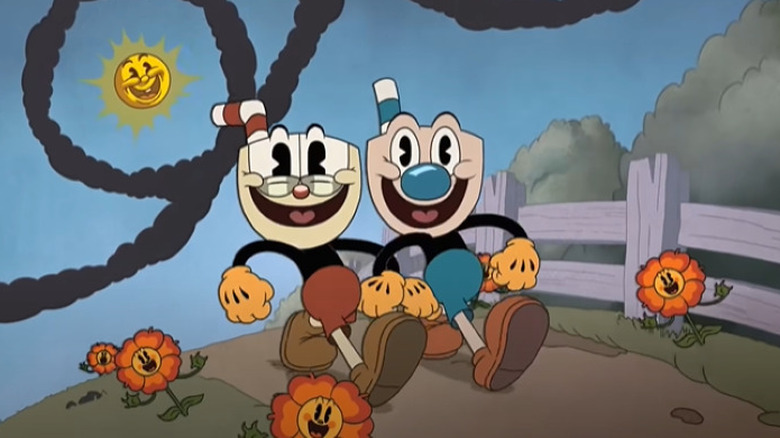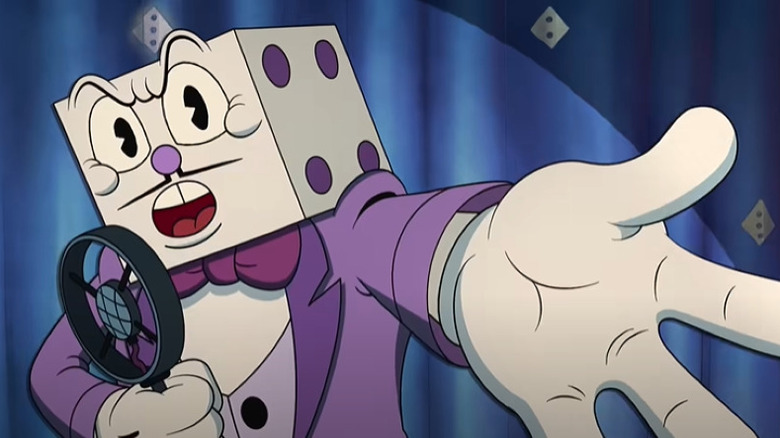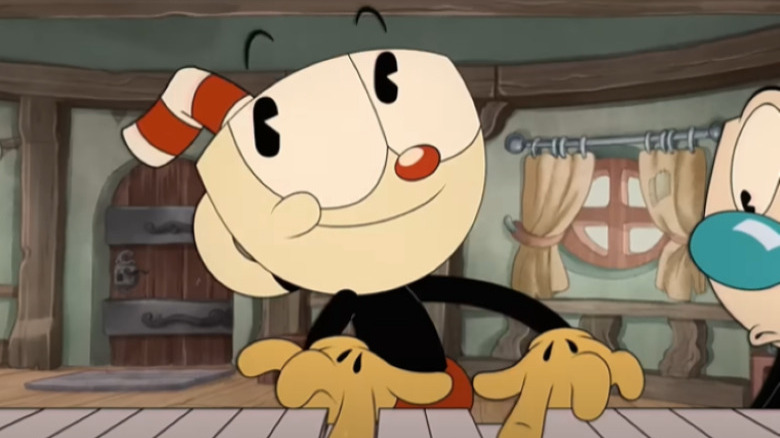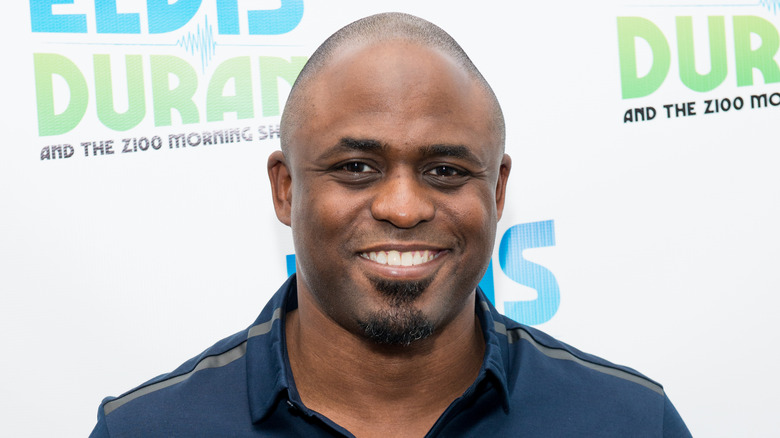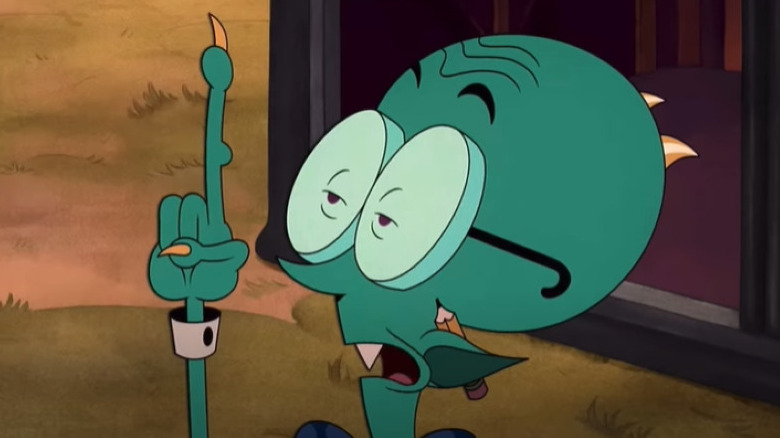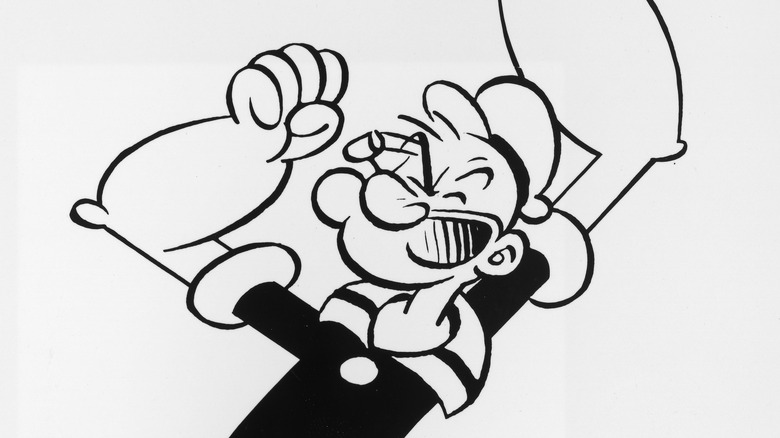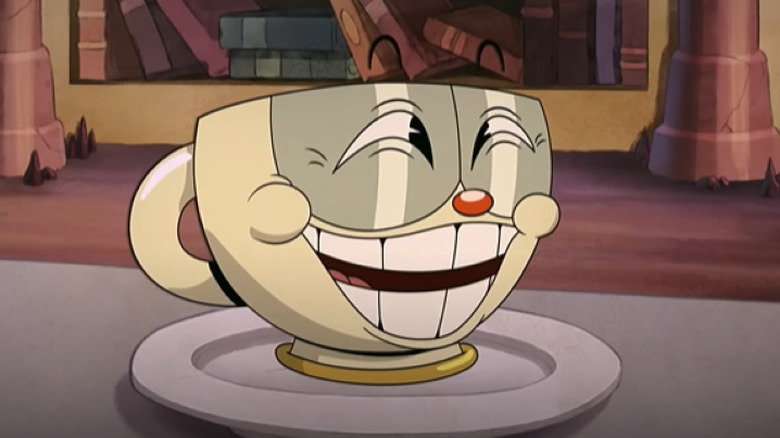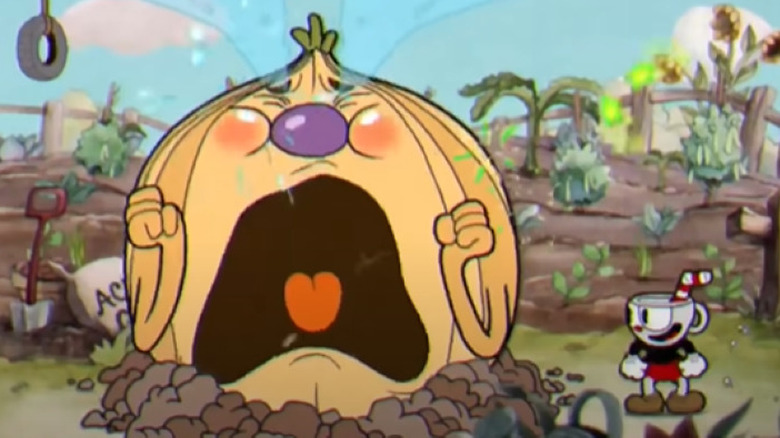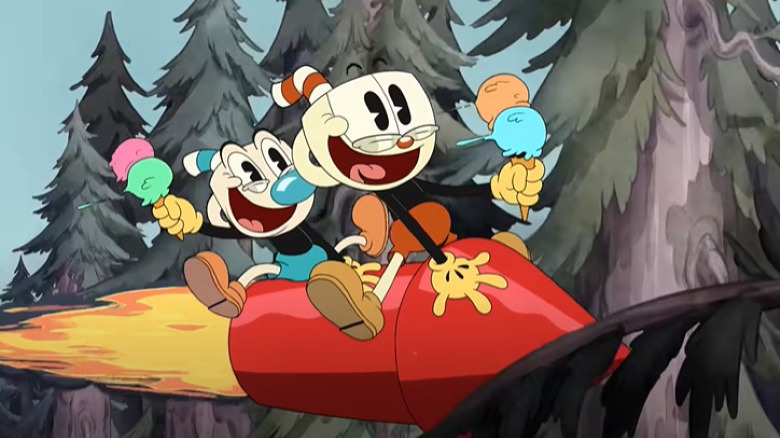The Untold Truth Of The Cuphead Show!
Starting as a video game that was supposed to resemble classic animated shorts, "The Cuphead Show!" in turn became its own hit animated series after debuting on Netflix in 2022. Incorporating all the best elements of assorted beloved cartoons, Cuphead is an anthropomorphic teacup stylized to resemble popular children's characters such as Mickey Mouse. The slapstick comedy follows Cuphead and his cautious brother Mughead as they circumnavigate their way through a world of wacky friends and enemies. Meanwhile, the vintage animation style, spirited music, and inane humor blend to make "The Cuphead Show!" feel like a cartoon made in the 1930s for an audience 100 years in the future.
After already premiering a second season in the same year as its debut, "The Cuphead Show!" is fast becoming a popular animated series for children and adults alike. While fans of the original video game snarl at the show's distance from the source material's run-and-gun violence and often edgy themes, much of the charm and fun of the game remains. A lot of effort and planning went into the release of "The Cuphead Show!" and many fans may not know all the behind-the-scenes surprises that went into developing this weird rubber hose-style series. Continue reading to discover the untold truth of "The Cuphead Show!"
The initial release was postponed for over a year
With the original "Cuphead" video game released in the fall of 2017, it didn't take long for the franchise to be greenlit as an animated series. Netflix first announced "The Cuphead Show!" in 2019, while confirming "Cuphead" creators Chad and Jared Moldenhauer would serve as executive producers. Despite the video game taking seven years to develop, the new animated TV show had its first major reveal at the Annecy International Animation Film Festival in 2020, with a promise that it was "coming soon" to Netflix.
Much the same way that the first "Cuphead" video game experienced significant delays, "The Cuphead Show!" had its own production issues. As confirmed by show director Adam Paloian on Twitter, the new series had the unfortunate luck of being produced during the Covid-19 pandemic and subsequent lockdowns resulted in the series being postponed from a potential 2021 release date. Thankfully, the show made up for the lost time by releasing two seasons consecutively in one year. As for any future projects from the "Cuphead" franchise, Chad Moldenhauer has jokingly stated, "you'll have to wait until we announce five years too early."
Multiple unfinished episodes were leaked
Being forced to deal with a leak is the last thing that any entertainment production wants to occur — as the people behind "The Cuphead Show!" discovered the hard way. Whether you're talking about video games, films, or television shows, behind-the-scenes crews work tirelessly to ensure the best possible work is delivered to audiences. Unfortunately, leaked footage is a real possibility that can often hurt the production of the finished product. (Meanwhile, it's also worth noting that the word "leak" is extra worrisome if your head happens to be, you know, a cup.)
With the growing popularity of the "Cuphead" game, it was no surprise that fans were eager to catch their first glimpses of the upcoming animated series. However, some fans took their anticipation too far when procuring early animatics and episodes of "The Cuphead Show!" Where the initial source of the leaked footage started is still unconfirmed, and no legal action has yet been taken. Still, the unfinished cuts spread like splattered milk across Reddit in 2020 for any fans looking to catch an early peek of the slapstick comedy.
It is heavily inspired by a collection of old Disney shorts
It is no secret that "The Cuphead Show!" takes much of its stylistic inspiration from the rubber band-style animation of the 1920s and 30s. You can even find the exact characters that influenced your favorite "Cuphead" characters in this article from Ceros. Between the pie-cut eyes and seemingly boneless limbs, "The Cuphead Show!" intentionally offers the nostalgic feel of old-school cartoons. Yet with a surprisingly extensive catalogue of wacky (and sometimes insensitive) animation to draw from, the "Cuphead" creators have offered one particular classic as the source of their inspiration — specifically, "Silly Symphonies."
"Silly Symphonies" is a collection of 75 animated short films produced by Walt Disney Productions and released from 1929 to 1939. The series is recognized for its groundbreaking animation techniques, as well as introducing the world to Donald Duck and scooping up seven Academy Awards for Best Animated Short Film along the way. The inaugural short film of the "Silly Symphonies" collection, "The Skeleton Dance," is particularly referenced in "The Cuphead Show!" during the Season 1 episode "Ghosts Ain't Real!" That's just one obvious spot to look, though — the series is peppered with homages to classic cartoons from Disney and Fleischer Studios.
Cuphead and Mugman mirror their creators
Less like Mickey Mouse and more similar to Super Mario, Cuphead has his own deuteragonist serving as player two. While Cuphead receives most of the accolade, Mugman is his much more sensible younger twin brother. It stands to reason that any good video game requires a second player option, which was the exact reason the creators gave for incorporating the blue-strawed twin. Mugman has since become an integral piece of "The Cuphead Show!," giving the lead character someone to play off — and more often argue with.
There is much more depth to the relationship between Cuphead and Mugman than can be showcased on television. Their brotherly bond transcends that of the cartoon world and takes inspiration from the creators themselves. During an interview with Animation Magazine, brothers Chad and Jared Moldenhauer examined the similarities between their relationship and the one between their creations. As Jared pointed out, "there's an older brother-younger brother dynamic." Elder brother Chad further explained his tendency to identify as the main character, while Jared assumes the role of the "little bit more dorky" Mugman.
Development involved unique animation techniques
Certainly, one would assume that an animation style that has been around for roughly a century would be simple to emulate in the modern era. Unfortunately, the pen-to-paper method of creating classic 2D cartoons is a painstaking endeavor that requires each panel to be individually drawn by hand. With a single second of animation requiring 20 to 30 drawings that then must be colored and filmed, the production of classic cartoons was nothing if not an extremely long process. The Walt Disney feature "Bambi" reportedly took over five years to animate. Arguably, the 12 individual 15-minute episodes of the first season of "The Cuphead Show!" could have taken even longer.
Thankfully, animation technology has come a long way. Still, to achieve the look and feel of a cartoon illustrated in the 1930s, the animators of "The Cuphead Show!" needed to be resourceful. As detailed in an article from the Los Angeles Times, the series utilized multiple techniques to finish the desired appearance. For many of the scenes, character poses were uploaded into computer programs helping to avoid a lot of repeated drawing. Meanwhile, backgrounds and scenery utilized the long-dormant stereoscopic method of animation, involving 2D sketches being overlayed on top of sculpted 3D miniatures. By striving to accomplish an aesthetic reminiscent of an era long gone, the series' animators essentially created a whole new style for the modern generation.
The show found the perfect composer for that catchy music
Response to "The Cuphead Show!" has been somewhat mixed between fans of the source material who struggle with the more immature tone and those who appreciate the potential of renewing a vintage style of cartoon for a new generation. However, one thing audiences seem to agree on unanimously is that the series offers some great musical numbers. The jazzy score and full-on theatrical pieces gift the show that extra element to create a timeless feel.
Finding the right mix of innovation and familiarity required the producers of "The Cuphead Show!" to find a very particular type of composer. Thankfully, they found the perfect wacky musician for the job in Ego Plum. Best known for his previous work on cartoons like "Star vs the Forces of Evil" and "SpongeBob SquarePants," Plum does not have a formal musical education, which may help him bring an element of unrefined edginess to his scores. In an interview with Big Shiny Robot, the composer described his work on "The Cuphead Show!" as "punk jazz," for its utilization of big band instruments that rely more on tempo mapping than traditional music theory.
All the recognizable voices
It's a shame that animation voiceover artists are all too rarely afforded the same notoriety as actors in live-action productions. Truthfully, the level of talent required to convey a character through nothing but voice is equal to, if not more, than that required when an actor has facial expressions and body movements in their arsenal. Many of your favorite animated characters are played by actors who deserve the same level of recognition as the biggest movie stars. The stars of "The Cuphead Show!" are no different; most of the voices heard throughout the series are connected to actors who have impressive resumes.
Leading the cast is Tru Valentino in the role of Cuphead. He's been heard in shows like "Beavis and Butt-Head" and "Spidey and His Amazing Friends," the latter of which finds him playing Black Panther. Behind the voice of Mugman, in a very Lou Costello-style delivery, is Frank Todaro, who has played the Decepticon Starscream in multiple "Transformers" outings and boasts nearly 100 acting credits. Playing Ms. Chalice, the local damsel of "The Cuphead Show!," is "The Simpsons" regular Grey Griffin. And taking the spot of the fan-favorite boss King Dice is Wayne Brady of "Whose Line is it Anyway?" fame. Meanwhile, the series is loaded with actors that have credits on trendy animated shows, including "Rick and Morty," "Robot Chicken," and "Archer."
Multiple queer characters have been confirmed
Mimicking a cartoon from the 1930s is dangerous territory. Society in general, including Western culture, has come a significant way when it comes to sensitivity regarding people's race, religion, and sexuality. Animation has a problematic history when it comes to misogyny and portrayals of minorities, especially at a time when those opinions were commonplace. "It was definitely something we were aware of," said showrunner Dave Wasson in an interview with Polygon. "It was a very different time."
While some argue that building an homage to this period of animation history is itself racist, "The Cuphead Show!" actively tries to avoid the negative connotations of the era. In truth, "The Cuphead Show!" is quite progressive — it turns a style of animation that was harmfully used for racist stereotypes and grants it a new life in the modern world. Meanwhile, some of those who work on the series actively try to advance the show's themes, specifically, head writer Deeki Deke who happily confirmed on Twitter that many of the characters are queer, including Sword, Stickler, and Mailman — who also happens to be non-binary.
Showrunner Dave Wasson would like to do a crossover with Popeye
Character crossovers are not a concept reserved for big box office cinematic universes. Arguably, the idea was birthed by animated shows with "Scooby's All-Star Laff-A-Lympics," "Cartoon All-Stars to the Rescue," and most famously, "The Jetsons meet the Flintstones" 1987 movies. Even Marvel had their share of crossovers before becoming a Hollywood sensation — Spider-Man blended in with the X-Men in their respective '90s cartoons, and the Fantastic Four's The Thing met "The Flintstones" way back in 1979. Needless to say, there's plenty of precedent for a crossover between "The Cuphead Show!" and another animated franchise.
There are endless television programs that "The Cuphead Show!" could cross over with. The Netflix Animation subsidiary has some in-house options, including "Kid Cosmic," "Aggretsuko," and "Hilda." Arguably, the style of "The Cuphead Show!" would be best fitted with cartoons that have done crossovers before, like "Scooby-Doo" or "The Flintstones." But Cuphead would be even better served blended with a vintage style animation from the era it tries to emulate, such as "Tom and Jerry," "Betty Boop," or the Walt Disney animated characters. However, when showrunner Dave Wasson was questioned by Animation Scoop regarding which cartoon he would most like to see a crossover with, he answered by saying, "I think it would be great to see an adventure between Cuphead and Popeye."
What is the liquid in Cuphead's head?
Now it's time to try and answer one of this generation's greatest riddles — specifically, what's inside Cuphead's cup head? It's a question that becomes more convoluted the more thought it's given. A mug with a handle automatically insinuates that the contents would be hot; meanwhile, the number of times that Cuphead loses liquid through splashes and spills would imply that his body generates the unknown fluid.
The internet is loaded with theories about Cuphead's contents. The character's creators have confirmed that the liquid represents their souls but have left its identification up to fans, and some guesses at what the substance actually is range from tea to moonshine. Still others have given it a more literal approach, suggesting that it could be brains, blood, or a form of cerebrospinal fluid. While we may never know for certain what's sloshing around in Cuphead's head, the voice actors for Cuphead and his brother Mugman have added their theories to the mix. In an interview with Netflix's official companion site Tudum, Tru Valentino and Frank Todaro walked back their initial response — a very boring "water" — and decided their characters should be filled with milk that's been laced with corresponding fruity flavors.
It is a far spill from the source material
As anybody who's read a book before watching its movie adaptation knows, a lot is often lost when taking characters and stories from one medium to another. The same could be said about video games that are turned into multi-season animated series — even when the game in question purposefully tried to look like a classic animated series. Aside from an assortment of plot changes and missing details, the original "Cuphead" game and the animated "The Cuphead Show!" have some substantial differences.
The most apparent change that fans have noticed in "The Cuphead Show!" is the lack of magic and abilities that the characters have in the video game. Specifically absent is Cuphead's ability to defeat his plethora of opponents with the use of energy bullets shot from his hands. There are some heavy character changes as well — for example, Elder Kettle plays a larger role in the series, while Ms. Chalice is much more of a troublemaker than the version of the character represented in the game. The biggest difference that seems to upset fans of the source material the most is the absence of mature material like alcohol, smoking, profanity, and often gory imagery. Of course, "The Cuphead Show!" is aimed more at younger audiences than its predecessor; however, the franchise may have lost some fans during the conversion.
Season 3 is already in development
After Season 2 of "The Cuphead Show!" ended on a cliffhanger, the biggest question fans were left with was whether, and when, a third season will make its way to screens. The uncertainty is heightened by Netflix's tendency to pull the plug on original series relatively quickly — especially animated shows. Thankfully, there's solid cause for optimism about "The Cuphead Show!" returning — at least for one more season.
During an interview with TheWrap, showrunner Dave Wasson happily confirmed that more episodes of "The Cuphead Show!" were on their way. The conversation happened in February of 2022 when the first season was released, so Wasson's promise has already been fulfilled with the arrival of Season 2. But he didn't stop at assuring a second season — he revealed that there are 36 episodes in total. With only 25 chapters across the first two seasons, that means an entire third season remains on the table. Unfortunately, until Netflix confirms a release date, fans understand that nothing is guaranteed. Still, with the original order for a 36-episode run in place, Cuphead and his merry band of vessel-headed friends may return sooner than you think.
